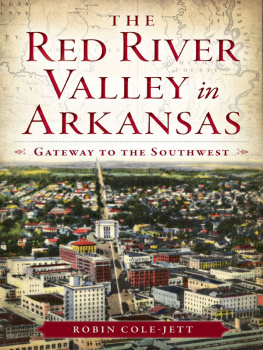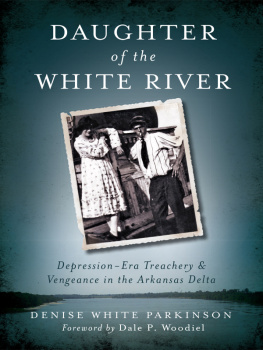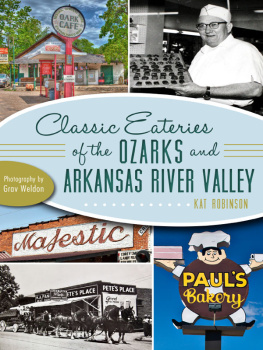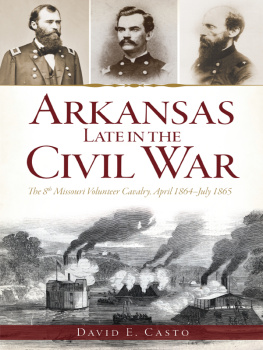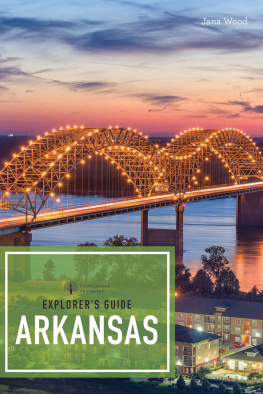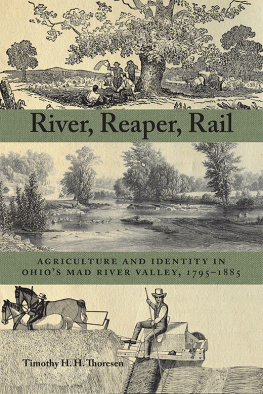
Published by The History Press
Charleston, SC 29403
www.historypress.net
Copyright 2014 by Robin Cole-Jett
All rights reserved
First published 2014
e-book edition 2014
ISBN 978.1.62584.628.0
Library of Congress Cataloging-in-Publication Data
Cole-Jett, Robin.
The Red River Valley in Arkansas : Gateway to the Southwest / Robin Cole-Jett.
pages cm. -- (Landmarks)
print edition ISBN 978-1-62619-173-0 (paperback)
1. Red River Valley Region (Tex.-La.)--History. I. Title.
F377.R3C65 2014
976.66--dc23
2014001909
Notice: The information in this book is true and complete to the best of our knowledge. It is offered without guarantee on the part of the author or The History Press. The author and The History Press disclaim all liability in connection with the use of this book.
All rights reserved. No part of this book may be reproduced or transmitted in any form whatsoever without prior written permission from the publisher except in the case of brief quotations embodied in critical articles and reviews.
CONTENTS
ACKNOWLEDGEMENTS
Since the turn of this century, I have been documenting the history of the Red River Valley, from its source in Palo Duro Canyon all the way down to the Mississippi River. The small website I started back in 2001based on a newsletter I had begun to publish earlierhas now grown into a database of sorts for Red River history. When I was contacted to write a book about my favorite topic of conversation, I jumped at the chance. I feel so very fortunate to share with readers my never-ending fascination with this body of water and the cultures that surround it.
I specifically chose to focus on the Great Bend regionsouthwestern Arkansasbecause I fell in love with Fulton. The Red River does not host many towns that sit along its banks anymore, as most settlements have fallen victim to flash floods, high water, railroads and highways. While most towns have succumbed long ago to a more modern age, that is not the case for Fulton (or its downriver sister, Garland City). Old maps still show locations of bygone river towns, like Laynesport, Rocky Comfort, La Grange and Lost Prairie, but only Fulton and Garland still retain their locations along the river, where steamships docked and ferries crossed, where inhabitants carried on even if they had to slosh through a foot or more of water. I admire these stalwarts of time passed, and although the towns no longer reflect their former glories, they inhabit the keen sense of place that makes me so interested in the history and geography of the Red River Valley.
Writing this book would not have been possible without so many wonderful, dedicated people. The archivists, librarians and historians at the Dallas Public Library, Arkansas Historical Commission and Southwestern Arkansas Regional Archives made my research work a true joy. My co-workers at North Central Texas College gave me much encouragement, as did my friends and family, especially my husband, Raymond; son, David; and mother, Barbara. Finally, I wish to thank the wonderful folks at The History Press.
With this book, I hope readers will discover their own enthrallment with the Red River.
INTRODUCTION
Sam Williams, an emigrant from Kentucky who arrived in southwestern Arkansas as an infant in 1838, lived along the Red River during his entire youth, first in Fulton and then in Washington, where he learned the newspaper trade at the Washington Telegraph. He wrote about his experiences in a memoir titled Printers Devilthe moniker for a printers apprentice. During his youth in Fulton, he watched the Red River at flood stage; his lasting impression of this stupendous expanse of water was that its banks were full to the top of very reddish, very muddy-looking water. His description, while not very poetic, did include another, very important detail: Upon the bank of the stream, at the ferry landing in Fulton, sat a man in his shirtsleeves, washing a pair of stockings in this red and dirty water as it swept by him in a ceaseless current. He saw the river not just as an obstacle to overcome or as a geographic feature to be feared. Unlike a naturalist or a scientist who focuses on hard data, Williams viewed the river as a historian would: a conduit for human interaction. It is within this context that the Red River in southwestern Arkansas should be defined.
When seen through the lens of humanity, rivers have served several distinct functions throughout much of history: as barriers, geographic boundaries and intermediaries for commerce and relationships. The Great Bend of the Red River definitely encompassed all three. The river barred people from their destinations, whether during floods or periods of drought, and presented a major obstacle in the growth of overland transportation, as trains and automobiles needed efficient and safe methods to cross the water. At one point, the river functioned as the border between the United States and Mexico, and it still marks the legal boundary between the states of Texas and Arkansas as it flows eastward toward the Index Line. Lastly, the river acted as an intermediary between the people who have called or still call southwestern Arkansas home and their environmentfrom the ferries that carried them across the stream to the boats laden with produce and gadgets that introduced adults and children alike to a wider world.
The past has put the river to good use. The Red River was Americas westernmost stream in which steamship activity became an important factor in building the economy. It was also one of the few rivers in America where waterway navigation was completely abandoned when the railroads appeared. The Red River is the thread that weaves the history of southwestern Arkansas together. This is why I have refrained from an extensive, detailed writing of histories about prominent people, congregations, companies, towns or schools. The stories of the rich and famous and their institutions have been recorded and retold ad nauseam and can be found in many historical journals, commemorative books and other tomes about the region. While notable people and places are of importance and do get mentioned, the focus of this story is on the relationship between the river and the people who surround it. Quite often, I have learned that the accounts of the regular, salt-of-the-earth kinds of men and women are the fodder for the most illustrative histories. In an account about how a river has affected its people, the everyday Joe or Jane provides a perspective of how it is to live with the river and not how to conquer or even negate it, as so many of the more prominent citizens have done.
As a historian who teaches a college survey course in American history, I have discovered quite the remarkable thing about southwestern Arkansan history: it mirrors the overarching stories in the greater American narrative in most, if not all, ways. Themes that have a tendency to appear throughout American historyManifest Destiny, Jeffersonian democracy, postCivil War malaise, incorporation and the southern cotton empireare well represented in the retelling of southwestern Arkansas past. A history professor could literally use just the Great Bend region to illustrate the outcomes of major historical events after the founding of the United States. Studying the four counties that surround the Red RiverMiller, Little River, Lafayette and Hempsteadprovides insight into American history as a whole.
The Red River may not be as grand as the Mississippi, as integral as the Ohio, as scenic as the Hudson or as well explored as the Missouri, but it is the path on which much of Arkansas history was formed.
Next page
